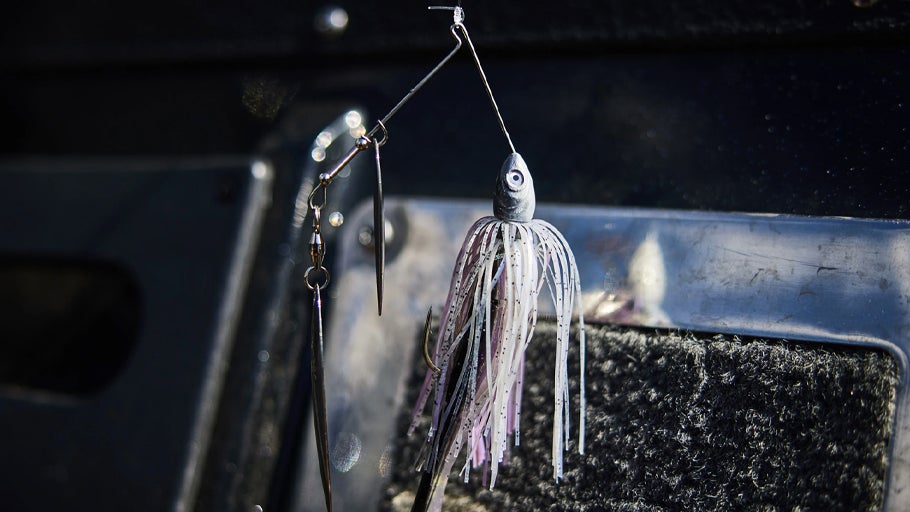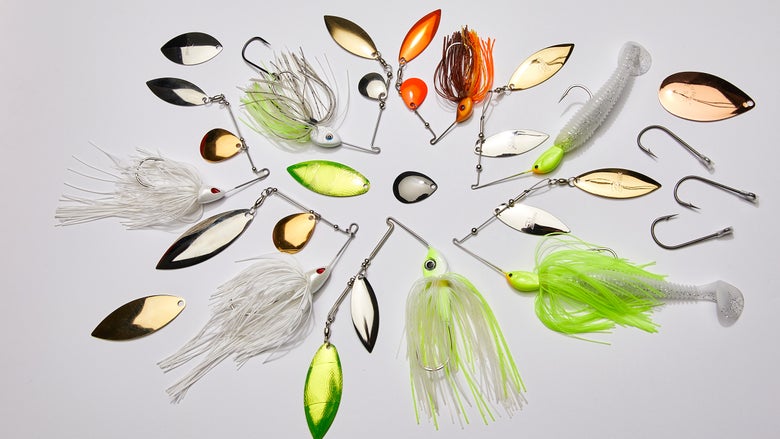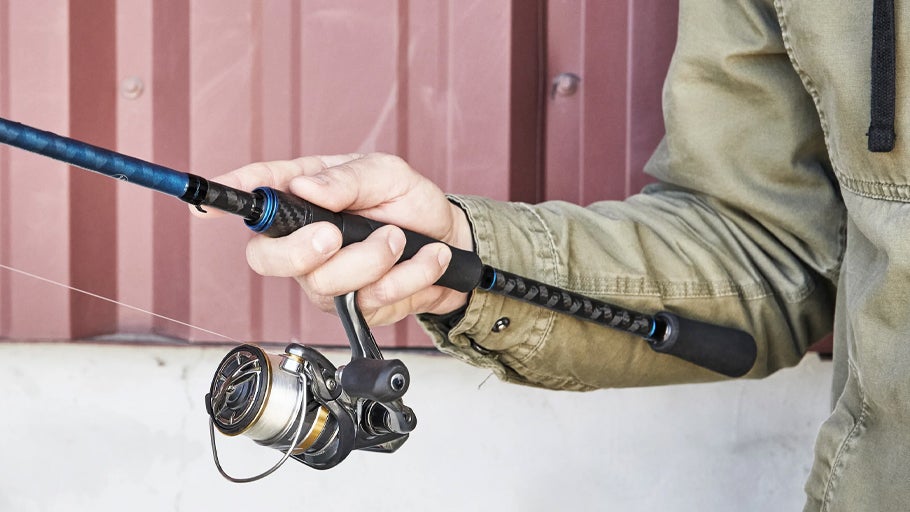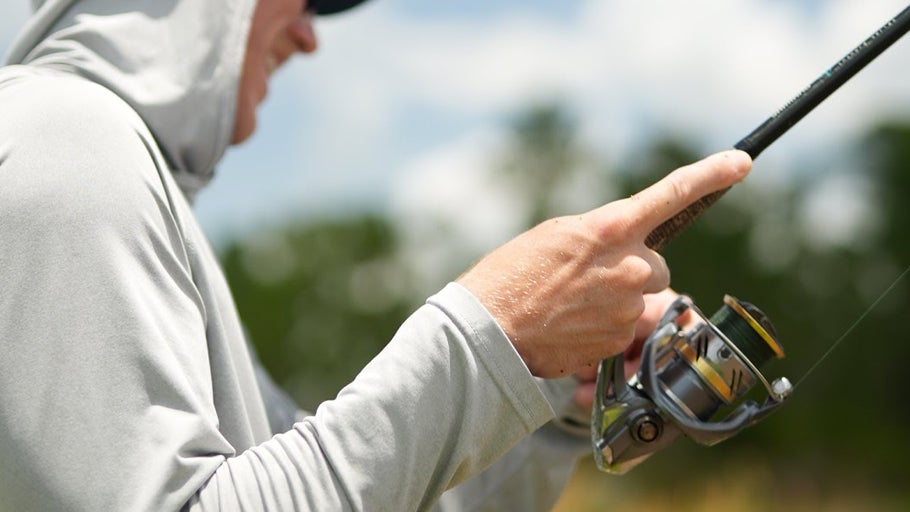
Best Bass Fishing Lures for Beginners
Immersing yourself in the world of bass fishing can feel overwhelming when just starting out. What seems like a simple sport quickly evolves into a complex puzzle with more and more pieces the further you go down the rabbit hole. Not only are bass constantly changing throughout the year, but the variety of lures to target them is vast and growing every day. From four-inch worms to foot-long swimbaits, where do you even start?
In this article, we’ve selected a handful of beginner-friendly bass lures and rigging styles. While they certainly aren’t the only choices in their categories, these stand out because they’re productive, easy to fish, void of treble hooks, and have weedless capabilities—the latter two qualities being vital when casting and fishing skills are not yet polished. For the beginner bass angler, it’s important to start with baits and rigs that are productive and simple to use to boost confidence and get a feel for bass fishing equipment and techniques. Let’s dive in and check out some of the best bass fishing lures and rigs!
Spinnerbait
Why We Recommend
- Gets bites by simply casting and retrieving at a steady pace
- Catches bass at all depths throughout the water column
- Comes through cover or structure relatively easily and is great for bank fishing
- Simple setup with little to no rigging required; can be fished straight out of the package for most beginner applications
Why the Spinnerbait is Great for Beginners
One of the most legendary lures ever invented, the spinnerbait has stood the test of time and is used by just about every bass angler on Earth. An excellent general baitfish imitator, spinnerbaits consist of a lead jig poured around a wire frame along with a variety of blade combinations.
Although heavier versions can be effectively fished quite deep, the spinnerbait is primarily fished in shallow water, especially around weeds, wood, and other forms of cover. Part of what makes a spinnerbait so productive has to do with its relatively weedless capability, as the head and wire do a good job of protecting the hook from constantly snagging. Whether casting in open water or around shoreline cover, learn more about the right spinnerbait gear in our Spinnerbait Gear Guide.
The high-visibility flash and attention-grabbing vibration of a spinnerbait draws in fish from great distances, making it a great choice for quickly covering large areas of water. Various retrieve styles can trigger a bite, but the most popular and effective method is known as “slow-rolling” which involves reeling just fast enough to get the blades spinning and keep the bait off the bottom. Thanks to the huge variety of skirt colors and blade styles, spinnerbaits are capable of catching bass year-round in different conditions.
Suggested Spinnerbaits
Texas Rig
Why We Recommend
- Versatile for fishing from shallow to deep while avoiding snags
- Works with many soft plastics, offering natural, subtle action ideal for wary or inactive bass
- Effective for both finesse and more active retrieves, appealing to different bass moods
- Excels at methodically picking apart specific areas with maximum effectiveness
Why the Texas Rig is Great for Beginners
Despite all the ways to rig soft-plastic baits, the Texas rig is one of the most common and simple methods for fishing from shallow to deep without stressing about snags. Whether you’re walking a farm pond, kayaking a river, or fishing on a bass boat, a Texas rig is a great way for a beginner to get familiar with the feel of fishing on the bottom. Learn even more about rigging and tackle selection in our Texas Rigs Gear Guide.
Many soft-plastic baits can be fished on Texas rigs, but plastic worms are perhaps the most popular. Worms with a straight or flat tail produce a very subtle, natural action that’s ideal for slow finesse presentations involving dragging or shaking. The subdued, realistic look and movement make these worms especially productive when bass are inactive or there’s a lot of fishing pressure causing the fish to be extremely wary. On the other hand, worms that are molded with a curly or ribbon tail work great with retrieves involving hopping and swimming, often appealing to bass that are more active. Plastic worms aren’t great for covering water quickly since they are usually fished slowly and don’t demand a ton of attention, but they excel at meticulously picking apart areas with maximum effectiveness.
In contrast to the baits already mentioned in this article, fishing a Texas-rigged soft plastic does require some added concentration. A Texas-rigged bait is typically fished on the bottom, so maintaining bottom contact throughout the retrieve is vital. As you work the bait slowly, you want to feel the bottom the whole time, which can be challenging when fishing on a windy day or from a moving boat. Stay alert as you fish, because bites are typically subtle, such as feeling a “tick” or seeing the line randomly move to either side as a fish swims off with your bait.
Suggested Soft Plastics for Texas Rigs
Soft Stickbait
Why We Recommend
- Can be fished weighted or unweighted from shallow to deep
- Highly productive any month of the year
- Ideal for various applications and can be rigged weedlessly
- Great for clear to stained water conditions
Why the Soft Stickbait is Great for Beginners
A thick, dense, heavy version of a plastic worm, the soft stickbait is an absolute fish-catching machine that exploded onto the scene with the release of the famed Yamamoto Senko in the mid-1990s. While a soft stickbait may not look very impressive at first glance, its profile and action often produce bites when other offerings don’t. Bait manufacturers produce various lengths and thicknesses of soft stickbaits, but a “standard” version in a five-inch size, such as the original Senko or Yum Dinger, is the perfect starting point.
A soft stickbait can be Texas-rigged with a light bullet sinker and worked on the bottom, but it really shines when Texas or wacky-rigged without any weight. When rigged weightless and allowed to sink on a slack line, a quality soft stickbait will maintain a horizontal posture as it rolls and quivers on its way slowly to the bottom. After hitting the bottom, a soft stickbait can be slowly retrieved like a plastic worm, but oftentimes it’s simply allowed to sit motionless on the bottom for a few seconds or twitched several times before reeling in for a new cast.
Soft stickbaits are relatively subtle, making them great for clear to moderately stained water. Weightless versions are most easily fished during calmer conditions in less than 10 feet of water and are especially useful for fishing around weeds and muck that would foul other offerings. Bass commonly bite soft stickbaits as they slowly flutter to the bottom, so rather than actually feeling a bite, you may just see the line jump, start moving off by itself, or stop feeding out before you think you’ve reached bottom.
Buzzbait
Why We Recommend
- Features a semi-weedless design
- Single hook fouls less and makes it easier to unhook and release bass
- Productive when fished in open water or around/over the tops of cover
- Easy to fish with a steady retrieve on the surface
- Visual, exciting topwater bites
Why the Buzzbait is Great for Beginners
Very similar in design to a spinnerbait, a buzzbait features a skirted head and one or sometimes even two winged propellers that sputter and buzz on the surface. Delivering plenty of noise and surface commotion along with a baitfish-like profile provided by the silicone skirt, a buzzbait uses sight and sound to attract bass from afar and can generate heart-pounding surface strikes unlike any other bait. Check out our Buzzbait Gear Guide for even more in-depth info on buzzbaits and tackle selection.
A buzzbait is made to fish strictly on the surface, but in contrast with treble-hook topwaters like walking baits and poppers, buzzbaits enjoy a lot more versatility because of the single hook and semi-weedless design. Not only can a buzzbait be fished confidently around sparse vegetation and other forms of cover, but a steady slow-to-medium retrieve starting as soon as the bait splashes down is highly effective for covering water quickly, making it easy for beginners to master.
Like all topwater lures, buzzbaits are typically used when bass are active in warmer water temperatures of around 60 degrees and up, equating to roughly mid-spring into the fall in many parts of the United States. While early and late in the day are prime times to throw a buzzbait, don’t overlook tossing one during the afternoon in shallow water, especially if it’s cloudy or windy.
Suggested Buzzbaits
Paddle Tail Swimbait
Why We Recommend
- Effectively fished with just a slow, steady retrieve
- Catches bass all year long
- Can be rigged for fishing at various depths
- Many types of paddle tail swimbaits allow for weedless rigging
Why the Paddle Tail Swimbait is Great for Beginners
Available in rigged and unrigged versions, paddle tail swimbaits are soft-plastic baitfish imitations that can be fished at a variety of depths. Offered in a wide range of sizes and colors, most paddle tail swimbaits share a general baitfish profile tapering to a flat paddle-shaped tail. This design produces a subtle, yet incredibly natural action that’s as versatile as it is effective. See our Paddle Tail Swimbaits Gear Guide for more about these baits and the tackle used to fish them.
Slowly, steadily reeling a paddle tail is highly effective, with maybe an occasional twitch or speed change thrown in once in a while to coax a reaction from inactive fish or ones that are merely following the bait. When rigged on a jig head, a paddle tail swimbait can also be effectively crawled or hopped along the bottom in deeper water to entice inactive fish during the cold water months.
Suggested Paddle Tail Swimbaits
A Note About Rod and Reel Selection
Choosing the ideal rod and reel is critical when it comes to bass fishing. While the size of the fish you’re after can come into play, selecting the right combo has more to do with where you’re fishing and what types of lures you’re using. What is an optimal setup for throwing crankbaits and topwaters is completely different from what you want for fishing jigs and plastic worms. To help remove a lot of the mystery involved with selecting a rod and reel for bass fishing, refer to our past articles about How to Choose Your First Rod and How to Choose Your First Reel.
Conclusion
Beginner bass anglers should remember that even the most seasoned pros started somewhere, and it takes time to develop a broad knowledge and proficiency in the sport. Choosing the right baits isn’t as complex as it may seem, and the examples given in this article provide the novice with a solid basis from which to start catching bass!























































